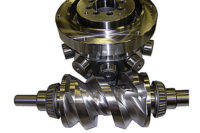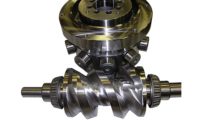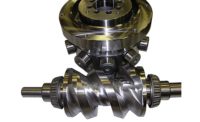Rotary indexers for automation applications offer a high degree of flexibility and performance. As you’ll discover, if applied correctly, WEISS rotary indexers can operate at peak performance and output for many years with minimal maintenance and virtually no adjustments.
Weiss has been designing and building rotary and linear motion products for over 50 years. During that time, we have developed simple sizing tools that enable us to precisely calculate your requirements and ensure that you receive a product that meets or exceeds the specific demands of your application.
Our free Sizing Guide Forms greatly simplify the process of designing and specifying a rotary indexer but there are a few key concepts that must be understood before moving ahead with your rotary indexing project. The following guide will reveal these simple concepts and provide you with a deeper understanding of how to more easily specify your next rotary indexer.
Rotary Indexing Key Concepts
Traditional sizing methods initially focus on weight loads and speeds. Our decades of experience and expertise have proven that a more accurate and efficient approach is to focus first on the actual output requirements of your application. For example, the number of parts per second that the machine needs to produce.
Armed with this information, you can determine your Dwell Time (the time spent at each station) and Index Time (the time required for the dial or plate to index from one station to the next). Dwell Time is determined by “the longest” individual station processing time. You may specify a particular Index Time or WEISS can optimize the Index Time by reviewing the load and output requirements, potentially offering multiple possible solutions for your application.
The next step in the process is to determine the number of stations required. Be sure to consider your part load and part unload stations, an element that is often overlooked in the sizing process. Adding stations will impact the outcome of the sizing.
After specifying the number of stations, the size of the dial or tooling plate needs to be determined. The diameter, thickness and material of the dial or tooling plate need to be specified.
Finally, the tooling weight at each station, as well it’s mounting in relation to the outside diameter of the tooling plate, needs to be determined. This is the most critical set of data, as it will have the most effect on correctly calculating the inertia.
Now that you have a brief understanding of these fundamentals, you can simply download and fill out a WEISS Sizing Guide Form that is freely available for download at https://smart.myweissna.com/sizing.
To make things even easier, those using SolidWorks can simply send us your tooling plate model as a complete project roll up. We will calculate the results by applying the motion laws that are specific to the type of indexer that you will be purchasing. We can also provide you with a detailed quote of the tooling plate and base.
WEISS offers a broad selection of rotary indexing solutions that satisfies the needs of our customers from both a performance and price perspective. Our goal is to deliver solutions that yield the optimal level of cost vs. performance.
Below are some images that represent the size and scale of solutions available from WEISS.
To learn more please visit us at



